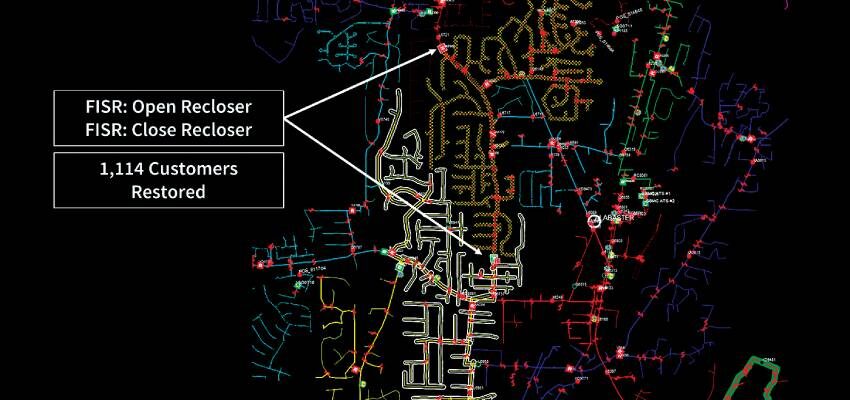From local intelligence to system intelligence
USA, Alabama, Birmingham: Alabama Power’s distribution system advancements minimise outages and restoration times.

Image source: T&D World
USA, Alabama, Birmingham: Alabama Power’s distribution system advancements minimise outages and restoration times.
Two of the most revolutionary advancements Alabama Power Co. has seen in distribution came with the implementation of both Fault Isolation and Service Restoration (FISR) as well as Fault Location (FL) in its Advanced Distribution Management System (ADMS). With utilities seeking ways to make the best use of automated devices, using FISR and FL in an integrated ADMS is a powerful way to make a positive impact on their business and their customers.
New technology such as Unmanned Aerial Vehicles can provide quick confirmation of Fault Location halos, especially in areas traditionally difficult to patrol.
FISR is a model-based application that analyses emergent outages dynamically in the system to develop restoration plans, check them for potential issues using real-time power flow, and implement the switching steps through Supervisory Control and Data Acquisition (SCADA) controls. Although FISR is a form of Fault Location Isolation and Service Restoration (FLISR), there is one key difference between the two. While FLISR requires the use of FL halos to dictate where to sectionalise lines, FISR relies on SCADA fault targets.
Although Alabama Power’s ADMS solution from GE Digital can be configured to run FLISR or FISR, the utility is careful to specify it uses FISR, with FL running separately.
Alabama Power began FISR deployments following a small pilot in Birmingham, Alabama, U.S., in 2018. After the pilot concluded, FISR deployment was completed in 18 months for all system substations and feeders that were appropriate candidates for the technology. While there are particular customer conditions that make a substation or feeder ineligible for FISR, Alabama Power has been able to deploy it successfully to 98 % of its customer base. High-level summary of FISR and Fault Location performance since implementation through 1 August 2020.
When compared to local schemes that require events to be downloaded and evaluated manually, FISR greatly simplifies tracking results because it exists in the ADMS, which archives every evaluation and restoration. Through 1 August 2020, FISR has restored customers 332 times successfully across Alabama Power’s service territory, avoiding approximately 42.8 million customer minutes of interruption (CMI). The average FISR plan restores 509 customers and 3,867 kWh while avoiding 129,852 CMI.
Source: T&D World




